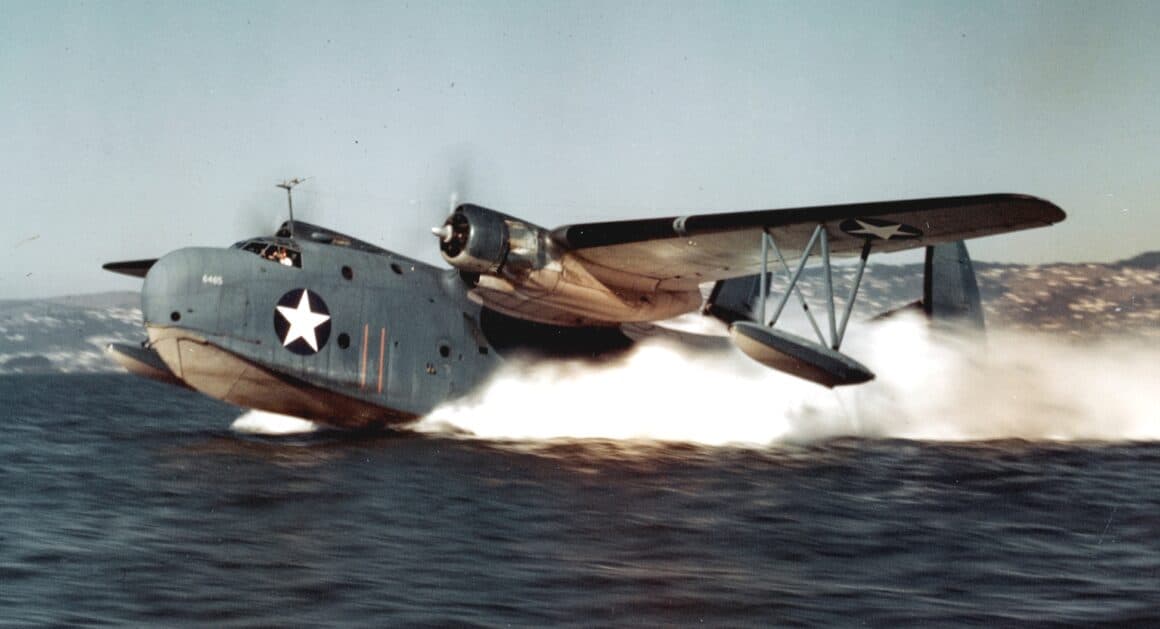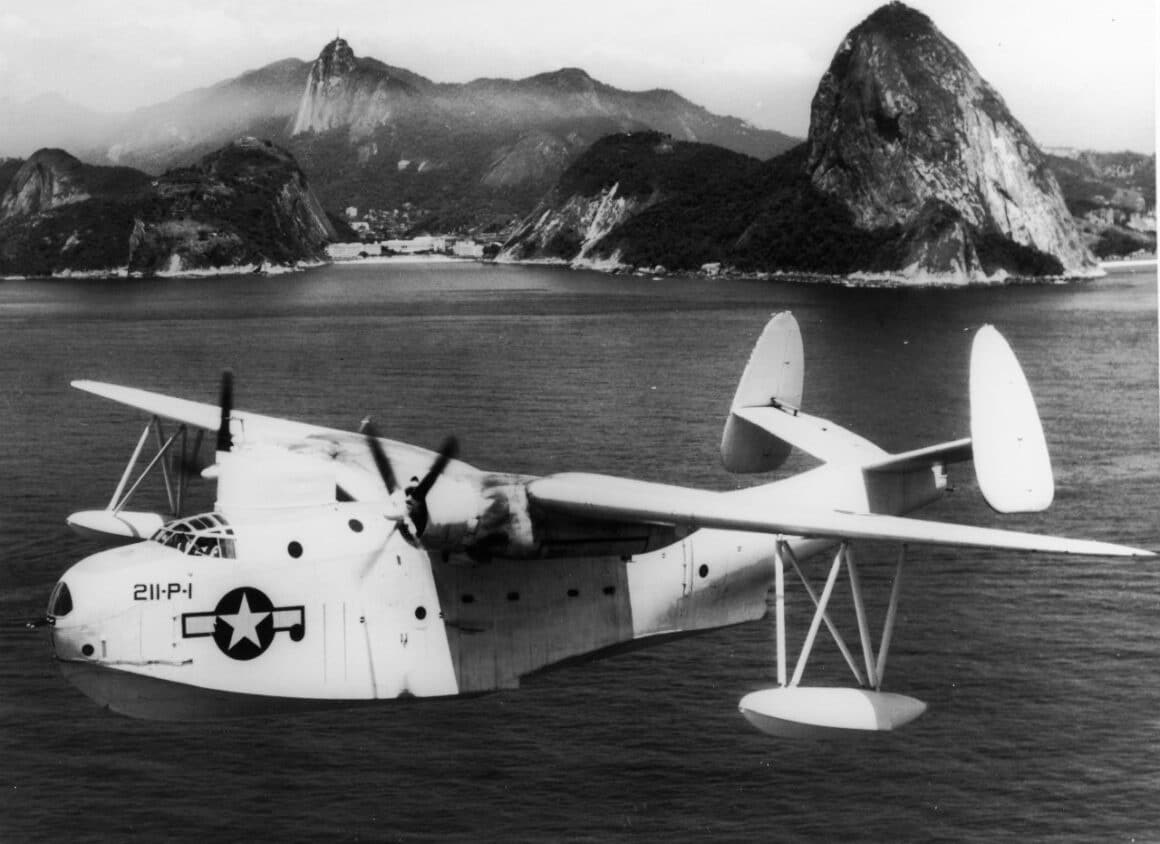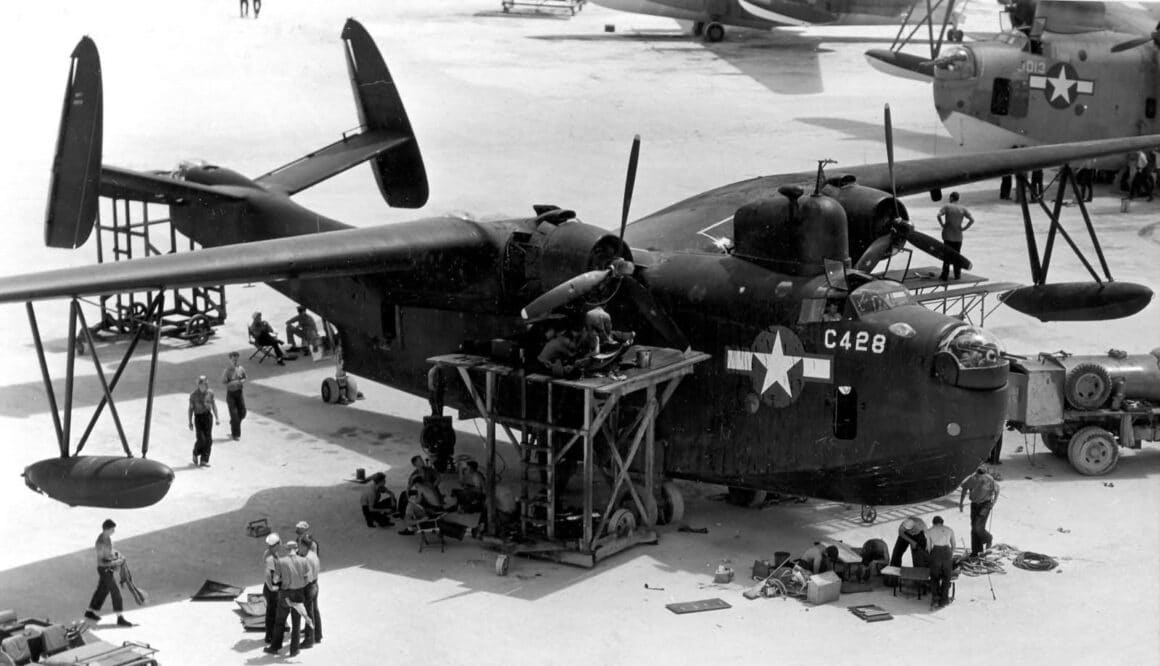Odds and Mods
PBM-3s were built in, or converted to, several configurations beginning in 1942. The PBM-3R was a transport with armor and defensive armament removed, removable seats installed, and floors strengthened to carry cargo. PBM-3Rs were operated by the Naval Air Transport Service (NATS) and operated around the globe. The PBM-3C first appeared in late 1942 and added twin .50 caliber machine guns to the nose and dorsal turrets along with increased protective armor. Many PBM-3Cs were fitted with the Sperry AN/APS-15 ‘Mickey’ radar and underwing searchlights for hunting U-Boats. The PBM-3S considerably lighter than the -3C due to exclusion of most of the protective armor and several of the defensive .50 calibers machine guns. These modifications resulted in a 25% increase in range for the -3S.

The Ultimate Wartime Mariner
The PBM-3D was equipped with uprated Wright R-2600-22 Cyclone radials putting out 1,900 horsepower each, self-sealing fuel tanks, additional protective armor, a twin-gun tail turret, a Norden bombsight in the nose behind a hatch, and the Sperry AN/APS-15 ‘Mickey’ radar set. Payload for the -3D was upped to 8,000 pounds. PBM-3Ds were in action in the Pacific by the time Operation Forager (the Marianas campaign) kicked off in mid-1944. In the Pacific theater PBMs primarily flew anti-submarine patrol, surface search, and ‘Dumbo’ air-sea rescue missions- although they also carried out anti-shipping missions. As the Allies island-hopped their way toward Japan, PBMs were never far from the forward areas, often moving into the waters around islands that hadn’t even been secured yet.

Care and Feeding of Flying Boats
In order to operate PBMs in such far-flung locations as these, the Navy built or converted scores of destroyer and escort-size ships into Seaplane Support Tugs (AVPs), Destroyer Seaplane Tenders (AVDs), and Seaplane Tenders (AVs). The majority of these ships provided bunk space and limited maintenance support to PBM crews in austere locations with protected anchorages. The larger, purpose-built Currituck-class seaplane tenders were equipped with heavy-lift derricks capable of hoisting the flying boats out of the water entirely and onto their decks for maintenance and repairs. When not flying their aircraft, Mariner crews often spent half their time onboard their PBMs and the other half aboard the tenders as some personnel were required to be aboard the flying boats when waterborne.

Stalking the U-Boat
East Coast PBM squadrons were primarily used for anti-submarine work, operating out of Naval Air Stations equipped with seaplane facilities such as Banana River in Florida, Norfolk in Virginia, San Juan in Puerto Rico, as well as from protected anchorages accompanied by tenders, from Iceland to Brazil. They scored their first U-Boat kill on 30 June 1942 and were credited with sinking a total of ten U-Boats during the war. Beginning in 1943 the Mark 19 homing torpedo (Fido) and the sonobuoy were used to localize and attack enemy submarines. Later in the war the Mariners were also used to train fledgling Naval Aviators like Bob Barker (yes…that Bob Barker) in intercept and mock gunnery work.

The Last Wartime Mariners
The PBM-5 was similar to the PBM-3D but powered by Pratt & Whitney R-2800-34 Twin Wasp engines putting out 2,100 horsepower each, mounted in lengthened cowlings and turning four-bladed Curtiss propellers. The base PBM-5 was also capable of utilizing Jet Assisted Takeoff (JATO) for extra push when taking off. The initial PBM-5s were equipped with the same protective armor, Sperry AN/APS-15 radar, and defensive weaponry as the PBM-3D. PBM-5s were the last wartime production Mariners, with deliveries commencing in August of 1944. Some were painted black in a similar fashion to the PBY Black Cats and dubbed Nightmares (Night Mariners).

More Odds and Mods
Modified PBM-5 series Mariners included the PBM-5E with early electronic warfare equipment, the unarmed PBM-5G for Air Sea Rescue work with the US Coast Guard, the one-off PBM-5M used for missile test monitoring, the PBM-5N for night intruder work, the lightened PBM-5S modified in a similar fashion to the PBM-3S for antisubmarine work, and the PBM-5S2, a Korean War modification of previously built PBM-5S airframes with the Westinghouse AN/APS-31 radar mounted behind and above the cockpit.

